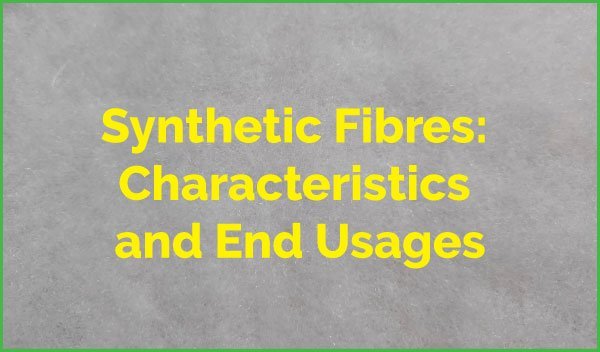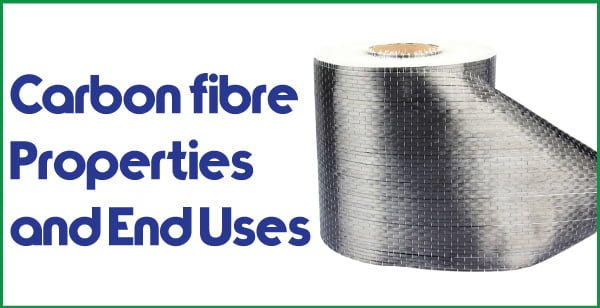🔝20 Natural Fibres in Textiles [2025] – Complete Guide
Last updated on July 4th, 2025 at 03:16 pm
🧵 Introduction to Natural Fibres
Natural fibres are derived from plants, animals, and minerals, offering sustainable alternatives to synthetic materials. They have been used for thousands of years in textile production due to their biodegradability, comfort, and versatility.
![Top 20 Natural Fibres in Textiles [2025] – Complete Guide.](https://textileapex.com/wp-content/uploads/2025/05/top-20-fibres.jpg)
This article we will explore the top 20 natural fibres used in the textile industry today, detailing their properties, applications, sustainability benefits, and current market trends.
🌿 Plant-Based Fibres
1. Cotton – King of Comfort
- Scientific Name : Gossypium hirsutum (90% global production).
- Fibre Type: Seed hair
- Fibre Length : 10–30 mm
- Properties : Soft, breathable, absorbent, hypoallergenic and moisture absorbent.
- Uses : Apparel, home textiles, medical products etc.
- Sustainability : Requires high water usage; organic cotton is eco-friendly alternative. Organic cotton uses 91% less water than conventional cotton (Textile Exchange, 2024).
✅ Did You Know? Cotton accounts for nearly 30% of global textile production.
2. Jute – The Golden Fibre
- Source : Corchorus olitorius , C. capsularis
- Length : 1–4 meters
- Properties : High tensile strength, low thermal conductivity and fully biodegradable.
- Uses : Sacking, packaging, geotextiles, carpets etc.
- Eco-Friendly Note : Grows pesticide-free and enriches soil.
📊 Market Insight : India and Bangladesh produce over 80% of the world’s jute.
3. Flax (Linen) – Ancient Luxury
- Fibre Type : Bast fibre
- Properties : Stronger than cotton, crisp texture, wrinkle-prone.
- Uses : Summer clothing, upholstery, table linen etc.
- Innovation : Blends well with cotton and hemp for durability and softness.
🌱 Sustainability Tip : Linen requires less water and chemicals than cotton.
4. Hemp – Eco-Friendly Fibre
- Cellulose Content : ~70%
- Properties : Antibacterial, UV resistant and durable.
- Uses : Clothing, car interiors, construction materials etc.
- Sustainability : Fast-growing, requires minimal pesticides and regenerates soil.
🌍 Trend Alert : Hemp-based insulation and bioplastics are gaining traction in green architecture.
5. Sisal – Industrial Strength
- Source : Agave sisalana
- Properties : Coarse, strong and moisture-resistant.
- Uses : Ropes, mats, composites etc.
- Note : Unsuitable for apparel due to roughness.
💡 Interesting Fact : Sisal is also used in erosion control nets and soil stabilization projects.
6. Ramie – China Grass
- Appearance : Silky white
- Properties : Lustrous, highly absorbent and stiff.
- Uses : Shirts, blends with wool/silk etc.
- Drawback : Requires chemical processing for softness.
🧬 Innovation : Bio-enzymes are now being tested to reduce chemical dependency in ramie processing.
7. Kenaf – Eco-Friendly Paper Alternative
- Similarity : Like jute
- Properties : Lightweight and high tensile strength.
- Uses : Packaging, paper, automotive parts etc.
- Eco-Benefit : Reduces deforestation.
📖 Case Study : Ford Motor Company has explored kenaf for interior panels due to its lightweight and recyclable nature.
8. Abaca (Manila Hemp)
- Source : Banana-like plant (Musa textilis)
- Properties : High lignin content and strong.
- Uses : Rope, specialty paper, marine gear etc.
- Advantage : Saltwater resistance. Ideal for marine and outdoor applications.
🌊 Global Impact : The Philippines is the largest producer of abaca , exporting over 100,000 tons annually.
9. Pineapple Leaf Fibre (Piña)
- Byproduct : From pineapple farming.
- Properties : Fine, lightweight and flexible.
- Uses : Luxury garments, accessories etc.
- Sustainability : Utilizes agricultural waste.
👗 Designer Spotlight : Filipino designers like Rajo Laurel use piña cloth in haute couture collections.
10. Coir – Coconut Husk Power
- Source : Coconut husk
- Properties : Durable and saltwater-resistant.
- Uses : Mats, brushes, erosion control etc.
- Limitation : Not easily dyed.
🌿 Environmental Use : Coir logs are widely used in wetland restoration and slope stabilization.
🐑 Animal-Based Fibres
11. Wool – Nature’s Insulator
- Source : Sheep fleece
- Properties : Elastic, warm and flame-resistant.
- Uses : Outerwear, blankets, carpets etc.
- Variety : Merino, lambswool, cashmere etc.
🐑 Ethical Fashion Tip : Look for Responsible Wool Standard (RWS) certification when purchasing wool.
12. Cashmere – The Luxurious Fleece
- Source : Cashmere goats
- Properties : Soft, light and insulating.
- Uses : High-end sweaters, shawls etc.
- Note : Expensive due to limited yield (~150 grams per goat/year).
💸 Market Insight : Genuine Mongolian cashmere fetches up to $100 per ounce in luxury markets.
13. Mohair – The Silk of Sheep
- Source : Angora goats
- Properties : Lustrous, resilient and lightweight.
- Uses : Blazers, scarves, suits etc.
- Feature : Reflective surface gives sheen.
🎨 Designers Love It : Often blended with silk or wool for a luxurious finish.
14. Alpaca – Sustainable Luxury
- Properties : Hypoallergenic, warm and soft.
- Uses : Sweaters, coats, throws etc.
- Eco-Friendly : Lanolin-free and biodegradable.
🦙 Unique Trait : Alpaca fibre comes in 22 natural shades, reducing dye usage.
15. Angora – Ultra-Soft and Warm
- Source : Angora rabbits
- Properties : Hollow structure for insulation
- Uses : Knitwear, gloves etc.
- Ethical Concerns : Controversial due to animal welfare issues.
⚠️ Caution : Many brands have shifted to faux angora alternatives made from bamboo or soy fibres.
16. Camel Hair – Rare and Luxurious
- Source : Bactrian camels
- Properties : Hollow core and lightweight warmth.
- Uses : Overcoats, jackets, scarves etc.
- Market Status : Limited availability.
🐫 Historical Use : Used in military uniforms during World War II for extreme cold environments.
🌳 Other Natural Fibres
17. Bamboo – Fast-Growing Green Option
- Regenerative : Grows rapidly without pesticides.
- Properties : Antimicrobial and moisture-wicking.
- Uses : Bedding, socks, t-shirts etc.
- Caution : Viscose bamboo involves chemicals.
♻️ Better Alternative : Mechanical bamboo (not chemically processed) retains more natural benefits.
18. Silk – The Queen of Textiles
- Type : Protein-based filament
- Properties : Smooth, lustrous and strong.
- Uses : Formal wear, lingerie etc.
- Ethical Note : Vegan silk options now available.
🪱 Process Insight : Traditional silk is harvested from silkworm cocoons; Ahimsa silk allows worms to emerge naturally.
19. Eucalyptus (Tencel/Lyocell)
- Production Method : Solvent-spinning process
- Properties : Breathable, silky and compostable.
- Uses : Activewear, underwear, denim etc.
- Eco Advantage : Closed-loop manufacturing reduces waste.
🌳 Brand Example : Patagonia and Reformation use Tencel in many of their eco-friendly collections.
20. Wood Pulp – Cellulosic Base
- Used In : Rayon, viscose, modal
- Properties : Soft and drapes well.
- Concerns : Deforestation if not sustainably sourced.
🔍 Certification Tip : Choose products certified by FSC (Forest Stewardship Council).
📊 Comparative Table: Top Natural Fibres at a Glance
| Fibre | Source | Key Property | Best For | Eco-Friendly? |
|---|---|---|---|---|
| Cotton | Plant | Soft, breathable | T-shirts, bedsheets | Yes (organic) |
| Jute | Plant | Strong, biodegradable | Bags, geotextiles | Yes |
| Wool | Animal | Insulating | Winter wear | Yes |
| Silk | Animal | Lustrous | Formal attire | Moderate |
| Hemp | Plant | Durable, UV resistant | Eco-clothing, panels | Yes |
| Bamboo | Plant | Regenerative | Underwear, sportswear | Yes |
🌱 Sustainability in Natural Fibres
Natural fibres offer multiple environmental advantages:
- Biodegradability : Most natural fibres decompose within months.
- Low Carbon Footprint : Compared to polyester or nylon.
- Circular Economy : Many fibres come from agricultural byproducts (e.g., pineapple leaves).
- Certifications : Look for OEKO-TEX, Global Organic Textile Standard (GOTS), and Fair Trade labels.
🌱 Pro Tip : Always check product labels for fibre origin and processing methods to ensure true sustainability.
🧬 Innovation and Future Trends
The future of textiles lies in combining traditional fibres with modern technology:
- Bioengineered Fibres : Lab-grown silk and algae-based fabrics.
- Recycling Programs : Brands using recycled cotton and wool.
- Smart Fabrics : Integration of conductive natural fibres for wearable tech.
🚀 Emerging Trend : MycoWorks and Bolt Threads are creating mushroom-based leather and spider-silk respectively — blending biology with textiles.
📚 Conclusion
Natural fibres continue to play a vital role in the textile industry, offering comfort, durability, and environmental benefits. As consumers demand more sustainable choices, these fibres—both traditional and innovative—are gaining renewed interest.
Whether you’re a fashion designer, student, or eco-conscious buyer, understanding the properties and uses of natural fibres can guide smarter purchasing and design decisions.
FAQs on 20 Natural Fibres in Textiles
1. What Are Natural Fibres in Textiles?
Natural fibres are raw materials derived from plants, animals, or minerals that are used in textile production. Common examples include cotton (plant), wool (animal), and silk (insect).
2. Which Natural Fibre Is the Strongest?
Hemp fibre is considered one of the strongest natural fibres due to its high tensile strength, durability, and resistance to mold and UV light. It is often used in industrial applications such as ropes, canvas, and eco-friendly building materials. Jute and flax (linen) also rank highly in terms of strength among plant-based natural fibres.
3. What Are the Top 5 Natural Fibres Used in Clothing?
The top five natural fibres widely used in clothing are:
Cotton – Soft, breathable, and versatile.
Wool – Warm and elastic, ideal for winter wear.
Silk – Luxurious, smooth, and lustrous.
Linen (Flax) – Lightweight and cool, perfect for summer.
Hemp – Durable, sustainable, and eco-friendly.
4. Are Natural Fibres Better Than Synthetic Fibres?
Natural fibres generally offer better breathability, biodegradability, and comfort compared to synthetic fibres like polyester or nylon. However, they may require more water, land, or care during production and maintenance. Synthetics are often cheaper, more durable, and easier to maintain but contribute to microplastic pollution and have a larger carbon footprint.
5. What Are the Most Sustainable Natural Fibres?
Some of the most sustainable natural fibres include:
Organic Cotton – Grown without harmful pesticides or synthetic fertilizers.
Hemp – Requires minimal water and enriches soil health.
Jute – Fully biodegradable and grown pesticide-free.
Linen (Flax) – Low water usage and fully recyclable.
Piña (Pineapple Leaf Fibre) – Made from agricultural waste, supporting circular fashion.



